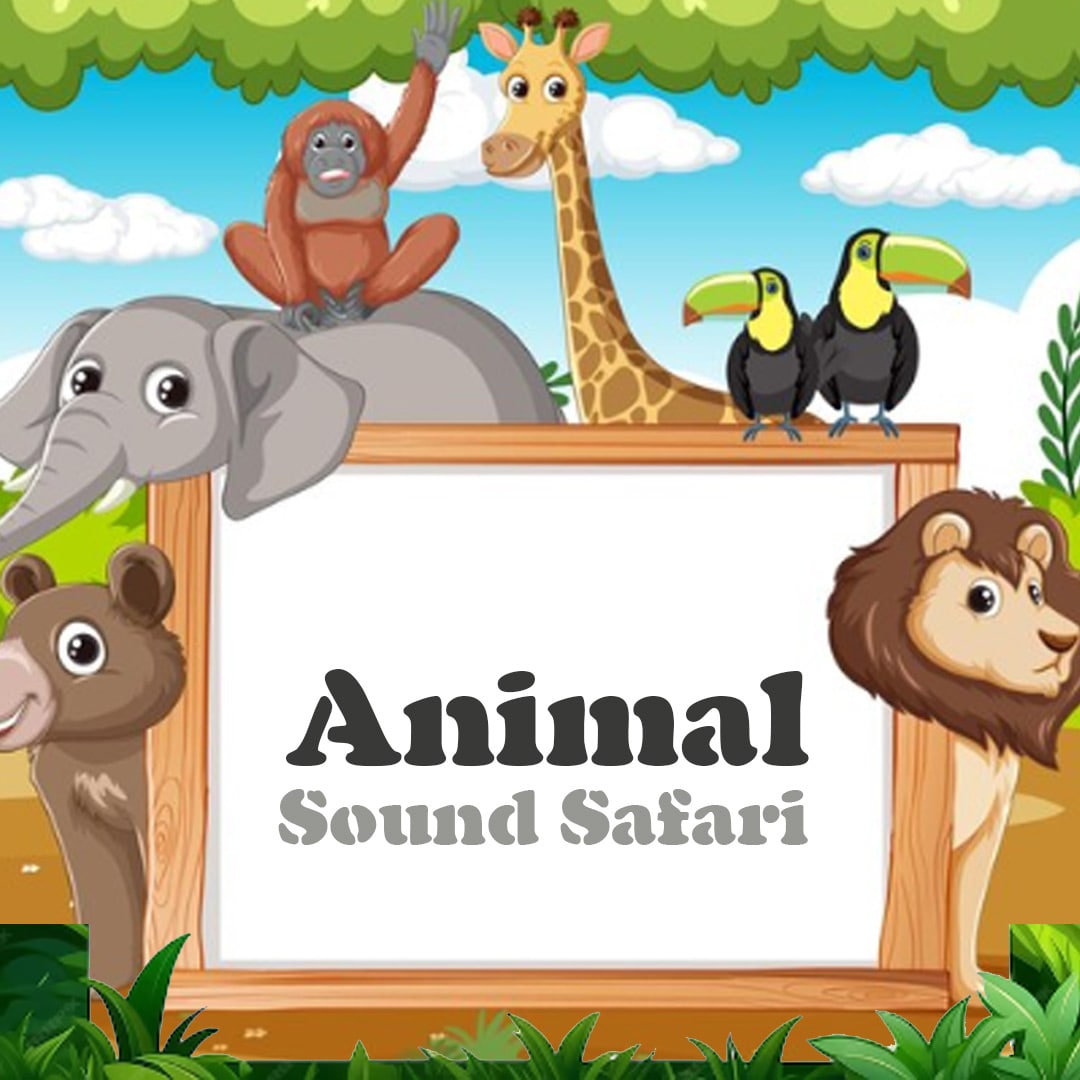

Please enter the code we just sent to whatsapp 91-11-46710500 to proceed
Didn't Receive OTP?

This blog post discusses the animal noises, what they do and why! We can discern this better by listening to the sounds while watching a movie, experiencing nature, or reading a story.
Sure it seems trivial, silly, and dumb to learn the calls of a second species occasionally, but it's useful in some ways. It's incredibly important, especially for little kids but it applies to everyone throughout their growth and development in life. Some of the reasons are mentioned below for which learning animal sounds is considered so important.
Children love to aper animal sounds as well as their movements. This helps build phonemic awareness which is vital for language acquisition. They can acquire several phonetic patterns and practice producing them through this imitation.
The uniqueness of each sound an animal makes contributes to identifying numerous speech sounds within a given language; thereby improving communication and literacy skills.
Learning, distinguishing, and understanding different animal voices can contribute significantly to developing environmental consciousness in children. This makes the kids interested and they become concerned about their environment plus exploring various species present there.
Whilst exploring and learning animal sounds, helps develop memory skills and thinking abilities as well. They start making connections with the animal sounds and recognize the animal names.
Engaging and interacting with animals while trying to imitate them promotes social growth. It promotes sharing, caring, and taking turns. It also gives a sense of joy and emotional development.
Listening to various unique animal sounds requires careful listening skills and concentration, which are great for communication and effective learning in all aspects of life.
Sounding like an animal encourages imaginative play, which is good for creative development, storytelling, and problem-solving skills. It also enables them to participate in reading sessions, making them interactive and a fun learning experience.
Listening to sounds and interacting with animals and birds exposes children to biology and zoology at an early age. They learn the eating, sleeping, behavioral patterns, temper, and different sounds used by them to interact with their species.
Here’s a list of a hundred animal names and the sounds they make:
| 1. | Dog |
Bark |
| 2. | Cat |
Meow |
| 3. | Cow |
Moo |
| 4. | Horse |
Neigh |
| 5. | Sheep |
Baa |
| 6. | Pig |
Oink |
| 7. | Duck |
Quack |
| 8. | Chicken |
Cluck |
| 9. | Goat |
Bleat |
| 10. | Frog |
Croak |
| 11. | Bird |
Chirp |
| 12. | Lion |
Roar |
| 13. | Elephant |
Trumpet |
| 14. | Bee |
Buzz |
| 15. | Snake |
Hiss |
| 16. | Owl |
Hoot |
| 17. | Wolf |
Howl |
| 18. | Donkey |
Bray |
| 19. | Rooster |
Crow |
| 20. | Turkey |
Gobble |
| 21. | Rabbit |
Squeak |
| 22. | Dolphin |
Click |
| 23. | Whale |
Sing |
| 24. | Monkey |
Chatter |
| 25. | Fox |
Yip |
| 26. | Coyote |
Yowl |
| 27. | Crocodile |
Bellow |
| 28. | Seal |
Bark |
| 29. | Peacock |
Scream |
| 30. | Hawk |
Screech |
| 31. | Giraffe |
Hum |
| 32. | Zebra |
Whinny |
| 33. | Parrot |
Squawk |
| 34. | Cricket |
Chirp |
| 35. | Bat |
Screech |
| 36. | Koala |
Grunt |
| 37. | Kangaroo |
Chortle |
| 38. | Penguin |
Honk |
| 39. | Hippo |
Grunt |
| 40. | Rhino |
Bellow |
| 41. | Moose |
Bellow |
| 42. | Buffalo |
Grunt |
| 43. | Camel |
Moan |
| 44. | Lemur |
Squeal |
| 45. | Wombat |
Growl |
| 46. | Armadillo |
Hiss |
| 47. | Sloth |
Squeak |
| 48. | Platypus |
Growl |
| 49. | Koala |
Squeak |
| 50. | Lynx |
Growl |
| 51. | Llama |
Hum |
| 52. | Alpaca |
Hum |
| 53. | Emu |
Drum |
| 54. | Orangutan |
Scream |
| 55. | Chimpanzee |
Hoot |
| 56. | Gazelle |
Snort |
| 57. | Iguana |
Hiss |
| 58. | Gecko |
Chirp |
| 59. | Macaw |
Squawk |
| 60. | Turtle |
Grunt |
| 61. | Jaguar |
Growl |
| 62. | Panther |
Growl |
| 63. | Antelope |
Snort |
| 64. | Bison |
Grunt |
| 65. | Flamingo |
Honk |
| 66. | Swan |
Hiss |
| 67. | Vulture |
Hiss |
| 68. | Pelican |
Squawk |
| 69. | Hyena |
Laugh |
| 70. | Meerkat |
Bark |
| 71. | Ostrich |
Boom |
| 72. | Walrus |
Bark |
| 73. | Porcupine |
Quill rattle |
| 74. | Otter |
Squeak |
| 75. | Beaver |
Gnaw |
| 76. | Badger |
Growl |
| 77. | Wolverine |
Snarl |
| 78. | Ferret |
Dook |
| 79. | Mink |
Squeak |
| 80. | Weasel |
Chirp |
| 81. | Panda |
Bleat |
| 82. | Aardvark |
Grunt |
| 83. | Manatee |
Squeak |
| 84. | Narwhal |
Click |
| 85. | Pangolin |
Chuff |
| 86. | Tamarin |
Squeak |
| 87. | Mandrill |
Roar |
| 88. | Baboon |
Bark |
| 89. | Marmoset |
Squeak |
| 90. | Tapir |
Whistle |
| 91. | Capybara |
Chirp |
| 92. | Okapi |
Cough |
| 93. | Kinkajou |
Chirp |
| 94. | Quokka |
Squeak |
| 95. | Thylacine |
Growl |
| 96. | Dugong |
Bark |
| 97. | Galápagos tortoise |
Hiss |
| 98. | Axolotl |
Squeak |
| 99. | Cassowary |
Boom |
| 100. | Harpy Eagle |
Scream |
Here are some interesting questions and their solutions for animal and bird sounds for grade 1,2 and 3 learners:
1. What sound does a dolphin make and how do they use it?
Dolphins use “click” sounds and they use it for sonar (echolocation). It helps them to navigate by sending waves, find food, and communicate with each other.
2. Guess which bird makes a “gobble” sound and what time of the year is it common”?
A turkey makes a “gobble” sound and it is very common during spring season, which is their mating season.
3. Why do roosters wake us early in the morning and what does the sound mean?
Commonly known by children as “cock-a-doodle-doo”. Roosters crow to signal the start of a new day and to mark their territory.
4. Which animal loves to sing and what does he/she use this sound for?
A snake “hisses” and gives a warning to its prey to stay away.
5. Which bird makes a hooting sound and when do you hear it?
An owl “hoots” as they are nocturnal.
6. How does the king of the jungle communicate with his pride?
A lion “roars” to dominate other lions and to mark its territory.
7. What does a kookaburra sound like?
A kookaburra makes a “laughing” sound like humans to mark its territory and communicate with their peers.
8. Which insect chirps at night and how do they produce the sound?
A cricket “chirps” at night by rubbing its wings together. This is called “stridulation.”
9. Why do peacocks produce this sound during mating season?
Peacocks “scream” or “squawk” during mating season to attract female prospects by spreading their colorful feathers.
10. How do bats navigate their way in the dark by this sound?
Bats make a “screech” or “clicking” sound for echolocation to navigate their way in the dark and hunt for food.
You know, when it comes to teaching our kids some of their first sounds, we always start with the classics like "Moo," "Woof," and "Baa." Looking back, it makes sense why kids are so drawn to animals and their sounds. So, here's a fun idea for the next time you want to teach your little one about animal sounds: get down on all fours and demonstrate it yourself! Pretend to be a dog and roll over, become a horse and give them a piggyback ride, or imitate a gorilla by pounding your chest. Not only will your kids learn what these sounds are, but they'll also have a blast doing it!
Shape Your Kid's Future with Bambinos Classes | Bambinos.live India's No. 1 English Communication Platform For Kids | Click here to Book a Free Class Limited time offer.